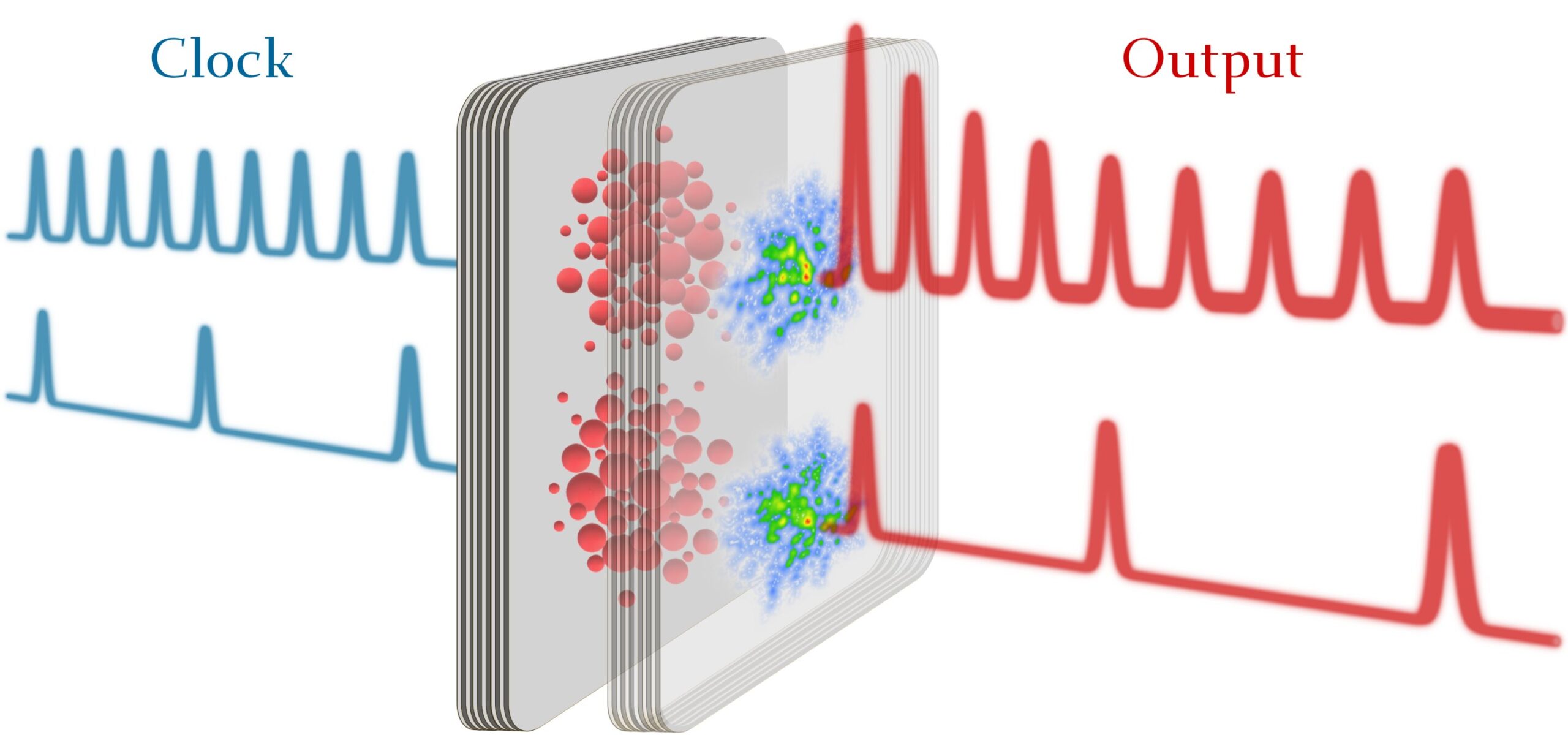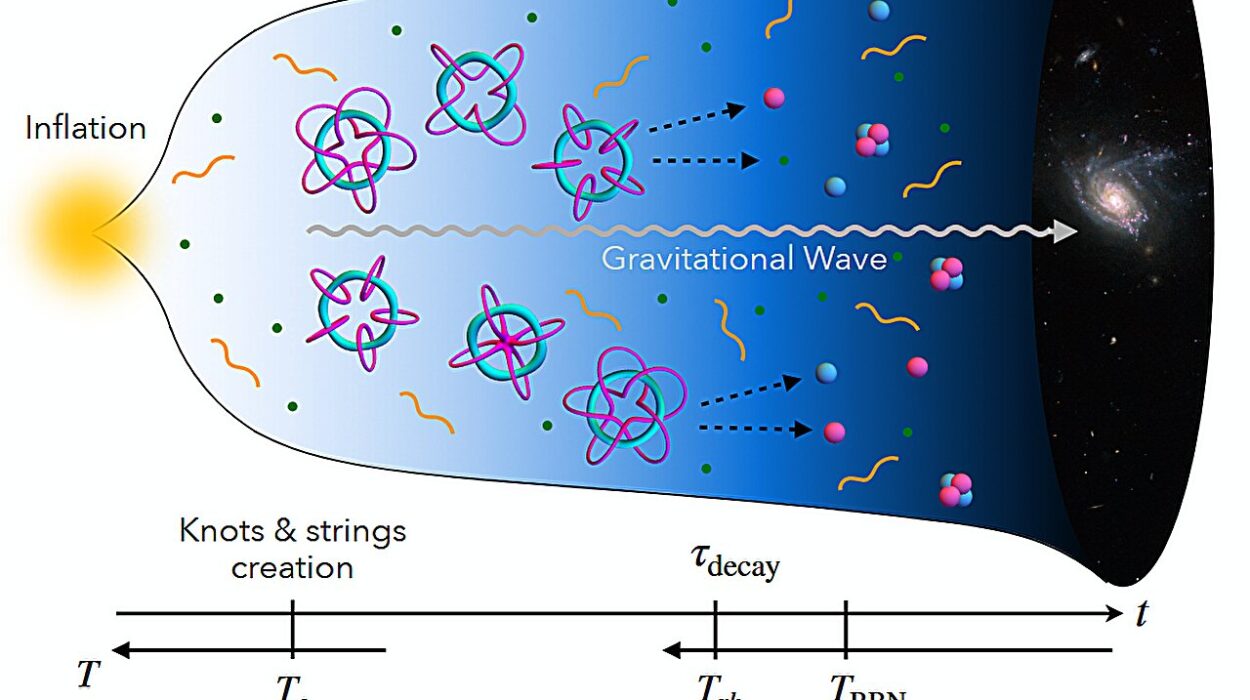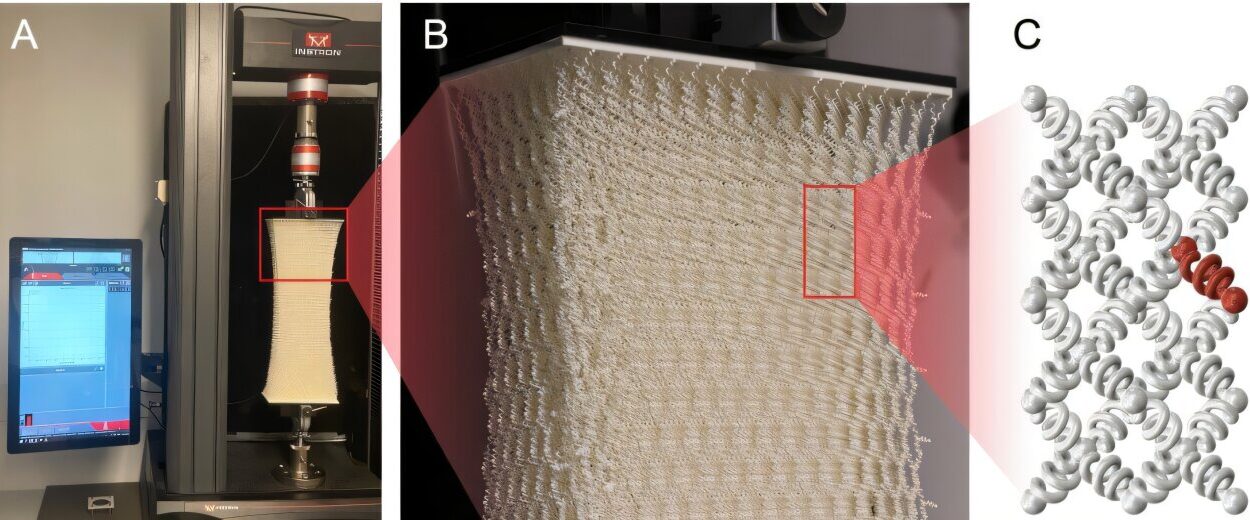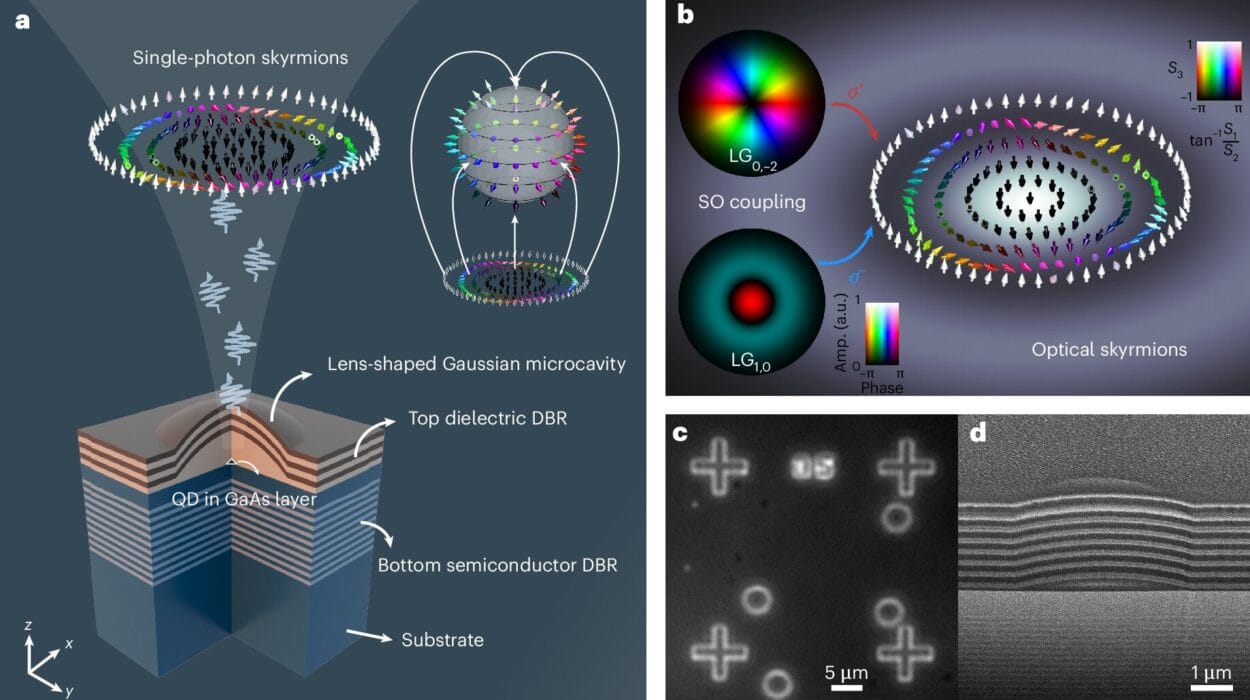Imagine a future where your computer processes data not at the sluggish pace of electrons crawling through silicon, but at the near-instantaneous speed of light. In a bold leap toward that vision, scientists at the Skolkovo Institute of Science and Technology (Skoltech) in Russia, working in tandem with colleagues from the University of Wuppertal in Germany, have demonstrated a stunning advancement: an all-optical universal logic gate operating at an unprecedented 240 GHz—and it works at room temperature.
Published in the prestigious journal Physical Review B, the breakthrough study doesn’t merely set a new performance benchmark for optical computing—it also dissects the fundamental physics that govern how fast these futuristic systems can really go. It’s not just about doing things faster; it’s about rethinking the entire foundation of how computers work.
Why Computers Are Stuck in the Slow Lane
To understand the significance of this achievement, let’s first consider the bottleneck of modern electronics. Traditional transistors—the basic building blocks of computer processors—are marvels of engineering. Yet they rely on the movement of electrons through semiconductors. As the clock speeds of CPUs and GPUs increase to perform more operations per second, the heat generated becomes unmanageable. There is a physical ceiling beyond which today’s electronics start to burn out or break down.
The logical solution? Stop relying on electrons. Start using light.
Light-based—or optical—computing offers a tantalizing possibility: a world where processors run hundreds to thousands of times faster, with drastically reduced heat production. But making light do the job of logic gates—the fundamental “yes-no” switches in computers—requires an entirely different set of technologies.
That’s where polariton condensates enter the story.
The Light-Matter Hybrids: What Are Polaritons?
At the heart of this research lies a quantum mechanical entity known as a polariton—a hybrid particle born from the coupling of photons (particles of light) and excitons (electron-hole pairs) within a special type of material. Under certain conditions, polaritons can condense into a single coherent quantum state, much like the famous Bose-Einstein condensates, but at significantly higher temperatures and with shorter lifetimes.
Unlike traditional computing elements that shuffle electrons through circuits, polariton condensates allow for light-speed switching between logic states. This creates an opportunity to build logic gates—like the NOR gate used in this study—that work purely with photons, using no electrical current at all.
These gates are not only faster but also reproducible and chainable, meaning they can be linked into circuits to perform increasingly complex operations—just like the silicon logic gates in your laptop or smartphone, but on steroids.
The Optical NOR Gate: A Key to Universal Computing
Previously, the Skoltech team developed a universal NOR logic gate, a fundamental building block that, theoretically, can be combined in various ways to perform any logical operation. What made it remarkable was its all-optical nature, ability to operate at room temperature, and its multi-input design, which allowed for more flexible logic operations.
Unlike classical transistors, this NOR gate doesn’t rely on voltage or current. Instead, it manipulates condensates of polaritons to represent binary “1” and “0” states. But the major question remained: Just how fast could such a gate work?
240 Billion Switches Per Second: Smashing Through the Speed Barrier
The latest study by the Skoltech-Wuppertal team provides a clear answer. Through a series of intricate experiments, they measured the gate’s maximum operational speed and found it could perform logic operations at 240 GHz—that’s 240 billion cycles per second, hundreds of times faster than today’s fastest consumer processors.
This is no mere incremental improvement—it’s a technological quantum leap.
The key challenge in achieving such speed lies in ensuring that one logic operation does not interfere with the next. When a polariton condensate is created to represent a “1” state, it doesn’t vanish instantaneously. Residual polaritons can linger in the system, and if the next operation occurs before they fully dissipate, the results become ambiguous. This lingering effect is what limits the logic gate’s speed.
The research team tackled this by analyzing the time it takes for polaritons to decay between pulses—a phenomenon influenced by a process called bimolecular quenching.
Understanding the Invisible Brakes: Bimolecular Quenching and Polariton Dynamics
Bimolecular quenching refers to the interactions between polaritons that lead to non-radiative losses. Essentially, two polaritons collide and annihilate each other, dissipating energy as heat instead of useful light. While this may sound like a nuisance, it plays a pivotal role in determining the speed limit of polariton-based devices.
Lead author Mikhail Misko, a doctoral student in physics at Skoltech, explains:
“Our new study has revealed that our logic gate can operate at 240 GHz. We also described the effect of bimolecular quenching, which is important to consider when calculating, since it limits the maximum clock frequency of a polariton device—delocalization of polaritons leads to additional losses.”
In essence, the faster the system tries to operate, the more residual polaritons remain from the previous logic state. These residuals can amplify or interfere with the next pulse. Thus, understanding and managing polariton decay becomes critical to maintaining clarity between logic operations.
The researchers discovered that by tuning the time between pulses and minimizing polariton lifetime overlap, they could significantly reduce unintended amplifications and false positives in logic state detection.
From Theory to Reality: Modeling Polariton Behavior
Beyond just experiments, the team also developed a theoretical model that accurately simulates how polaritons behave under different conditions. A key insight was to consider k-dependent losses—losses that vary with the momentum of polaritons. This nuance allowed the model to match experimental data with high precision and provided new predictive power for designing even faster devices.
The model also reinforced the importance of pulse duration. To achieve maximum clarity in logical output, the pump pulses (bursts of light used to create polariton condensates) must be shorter than the characteristic timescales of key processes like quenching and energy relaxation. This ensures that the system doesn’t accumulate unwanted noise from overlapping states.
These insights lay the foundation for scaling up the technology—from single gates to fully functional optical processors.
A Future Without Electronics? Not Quite—But Close
While this research does not signal the immediate end of electronic computing, it points toward a hybrid future where optical and electronic components coexist, each handling tasks best suited to their strengths. For instance, optical computing excels at high-speed, high-volume data processing, such as in artificial intelligence, telecommunications, and quantum simulations.
The Skoltech team’s work, under the leadership of Professor Pavlos Lagoudakis, a renowned expert in hybrid photonics and laureate of the Vyzov Scientific Prize, is part of a growing international push toward light-speed logic architectures.
Professor Lagoudakis and his team are building not just faster computers but a new computing paradigm, where energy efficiency, speed, and scalability converge.
The Road Ahead: Scaling Up and Integrating Optics into Everyday Devices
There’s still much work to be done. Optical components must be miniaturized and integrated into chip-scale architectures. Manufacturing processes must evolve to accommodate new materials like semiconductor microcavities, and new algorithms must be developed to make use of the unique properties of polariton logic.
Yet the momentum is undeniable. The idea that computers can operate at the speed of light, using condensates of hybrid particles and no electrical current, once sounded like the stuff of science fiction. Today, it’s a measured reality, demonstrated in a lab and poised to reshape computing as we know it.
Conclusion: A Quantum Leap for the Future of Computing
The demonstration of a 240 GHz all-optical logic gate marks a revolutionary milestone in computational physics. By unraveling the constraints imposed by bimolecular quenching and mastering the dynamics of polariton condensates, researchers at Skoltech and the University of Wuppertal have taken a critical step toward the next generation of ultra-fast, energy-efficient optical computers.
In a world hungry for speed, data, and sustainability, this breakthrough promises not just a better computer—it promises a better future.
Reference: Mikhail Misko et al, Temporal bandwidth of consecutive polariton condensation, Physical Review B (2025). DOI: 10.1103/PhysRevB.111.L161403. On arXiv: DOI: 10.48550/arxiv.2407.21544






